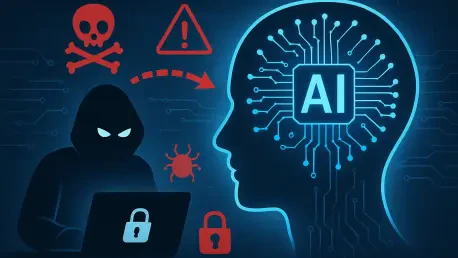Today, we’re thrilled to sit down with Oscar Vail, a renowned technology expert whose pioneering work in quantum computing, robotics, and open-source projects has positioned him at the forefront of the industry. With AI becoming increasingly integral to business operations and everyday life, Oscar offers a unique perspective on the intersection of technology and organizational dynamics. In this conversation, we dive into the often-overlooked cultural challenges in AI security, exploring how team habits, unclear ownership, and fragmented decision-making can pose greater risks than technical flaws. We also touch on the impact of regulatory frameworks and the specific challenges in high-stakes sectors like healthcare and finance.
Can you explain what you mean when you say the biggest AI security risks lie in culture rather than code?
Absolutely. When we talk about AI security, the instinct is to zero in on the tech—clean data, strong algorithms, secure models. Those are crucial, but the real vulnerabilities often stem from how teams work together. Culture shapes the way decisions are made, how information is shared, and whether risks are even noticed. A flaw in code can be patched, but if a team lacks clear communication or accountability, those gaps create blind spots that no amount of technical fixes can address. It’s the human element—habits, assumptions, and coordination—that often determines whether a system stays secure.
How do day-to-day team practices contribute to the gradual buildup of AI security risks?
It’s the small, seemingly harmless choices that add up over time. For instance, a team might skip logging an update to a model because they’re in a rush. Another team might reuse that model without knowing its history, introducing unintended biases or errors. These aren’t big, dramatic failures—they’re quiet oversights born from inconsistent routines or lack of shared norms. Without regular check-ins or clear documentation, these tiny missteps compound until they become a significant vulnerability that’s hard to trace or fix.
Why do issues like unclear ownership and fragmented decision-making seem so common in AI development?
AI projects are inherently complex and collaborative, often spanning multiple teams with different priorities and expertise. When roles aren’t clearly defined, it’s easy for ownership to slip through the cracks—no one knows who’s ultimately responsible for a model’s security or updates. Add to that the fast-paced nature of tech environments, where tools and goals shift quickly, and you get fragmented decision-making. Teams make changes in isolation, without a unified view of the system, which creates confusion and slows down responses when issues arise.
How significant is the problem of AI models moving between teams or being updated without proper context in real-world scenarios?
It’s a huge issue, and it’s more common than people realize. Without context, teams can’t fully understand how a model was trained or what assumptions were baked into it. I’ve seen cases where a model was updated to address one issue, like reducing false positives, but because the next team didn’t have the full backstory, they deployed it in a way that amplified other risks. It’s like playing a game of telephone—each handover distorts the original intent, and by the time a problem surfaces, it’s nearly impossible to pinpoint where things went wrong.
What steps can organizations take to better manage updates and handovers for AI systems?
First, they need to prioritize transparency and documentation. Every change, no matter how small, should be logged with clear notes on why it was made and by whom. Second, establish a shared framework for handovers—think of it as a checklist that ensures critical context travels with the model. Finally, invest in cross-team communication channels, like regular sync-ups or shared dashboards, so everyone has visibility into what’s happening. It’s about building a culture where context isn’t an afterthought but a core part of the workflow.
How do you see regulatory efforts, like the UK’s Cyber Security and Resilience Bill, helping to address AI security challenges?
The Bill is a positive step because it sets clear expectations for operational security, like continuous monitoring and incident response, especially for critical systems. It pushes organizations to think beyond one-off fixes and build more robust processes. While it’s largely focused on technical and operational standards, it indirectly encourages cultural shifts by holding providers accountable for how they manage risks. That said, it doesn’t fully tackle the day-to-day cultural nuances of AI development, like how teams coordinate or embed governance into their routines, which is where many risks originate.
In high-stakes industries like healthcare and finance, how do cultural risks specifically impact AI security?
In these sectors, the stakes are incredibly high—AI decisions can affect patient outcomes or financial stability. Cultural risks, like poor communication between technical and domain experts, can lead to models that don’t account for real-world complexities, such as ethical considerations or regulatory constraints. There’s also often a rush to deploy solutions in these fast-moving environments, which can mean skipping critical oversight or training. When teams aren’t aligned on priorities or lack a shared understanding of accountability, those cultural gaps can directly undermine the trust and safety of the systems they’re building.
What’s your forecast for the future of AI security as it relates to organizational culture?
I think we’re at a turning point where businesses will start treating culture as a core component of AI security, not just a nice-to-have. As AI scales across industries, the organizations that thrive will be those that invest in cultural maturity—clear ownership, consistent habits, and strong communication. We’ll likely see more frameworks and tools designed to bridge cultural gaps, alongside regulations that push for accountability at the team level. But it’s going to take time and commitment from leadership to shift mindsets and make culture a tangible asset in securing AI’s future.









